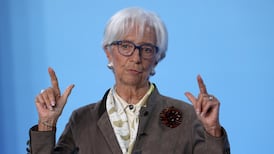How likely was it that Donald Trump would seek to change the goalposts of his trade deal with the EU? Most people would have said, very. Despite assertions from the European Commission that the deal would bring clarity and certainty to exporters, confusion reigns.
Less than 24 hours before the new 15 per cent tariff regime comes into force, Trump is already talking about imposing tariffs of up to 250 per cent on pharma exports from Europe, just days after we were told any pharma tariffs would be capped at 15 per cent.
“We’ll be putting a initially small tariff on pharmaceuticals, but in one year – one and a half years, maximum – it’s going to go to 150 per cent and then it’s going to go to 250 per cent because we want pharmaceuticals made in our country,” Trump said on Tuesday.
“They [pharmaceutical companies] make a fortune with pharmaceuticals, and they make in China and Ireland and everything else,” he said.
READ MORE
What does this mean for Ireland?
If Trump is to be taken at his word, and that’s a big if, this could be spell big trouble for Ireland.
Most of the State’s €70 billion plus exports to the US comprise pharma-related products. Ireland plays host to most of the big names in the global pharma trade. Pfizer, Merck, Eli Lilly, to name but a few, use Ireland as a base from which to export globally.
A 15 per cent tariff on their exports to the US – the rate we were told we were getting – would have been detrimental but perhaps manageable; a rate of 150 or 250 per cent would kill off the trade altogether, placing question marks over the Irish operations of these firms and Ireland’s ability to attract future foreign investment. Said another way, the State’s economic model would be under threat.
But will Trump make good on his threat?
Again, there’s no way of knowing but relying on the so-called Taco (Trump always chickens out) dynamic is not realistic.
Trump has singled out pharma as one of the main drivers of the US’s big trade deficit (in goods) with the EU and, going back even to his first term, has frequently lashed out at the industry for presiding over high drug prices in the US.
His crusade could, however, run into a few roadblocks. For one, drug demand is relatively inelastic. People can’t exactly jump off their prescription medications because they don’t like the price.
One of main drivers of high prices in the US is also the country’s complex healthcare system, which includes a large private insurance industry with multiple intermediaries.
And, of course, multinationals cannot just switch their 10-year investment cycles overnight.
The nightmare scenario for Ireland?
The nightmare scenario for Ireland would be for a Pfizer to up sticks and leave in the face of Trump’s protectionist agenda.
There’s no way of telling how current US policies are influencing decision-making in the boardrooms of these companies. Like everyone else, they are probably adopting a wait-and-see approach.
But there’s likely to be a lot of push back against Trump’s tariff threats. These companies are very profitable, particularly for their Wall Street investors and Trump’s policies fly in the face of that.
What about the non-pharma trade?
As per the agreement last week, a baseline tariff of 15 per cent will apply to most, not all, EU exports into the US from Thursday. That’s better than the 30 per cent initially threatened by Trump and the 39 per cent that the White House suddenly imposed on Switzerland last week.
Many Irish food and drink exporters operate in price-sensitive sectors and the recalibration could be difficult. Some Irish whiskey exporters may be forced “to reorientate their focus away” from the US if a 15 per cent tariff rate applies, the Irish Whiskey Association warned last week. As the US is their biggest market, that is easier said than done.
What else?
Of course, the big question surrounding Trump’s protectionist trade agenda is how will it impact the US economy. A big slide in performance there – and there are preliminary signs of this in the latest jobs data – and Trump may have to soften his stance.
He is already hounding Federal Reserve boss, Jerome Powell, to reduce interest rates to cushion any impact of tariffs but with inflation ticking up, that’s unlikely.
It’s a bit of a double-edged sword for Ireland, the State naturally doesn’t want tariffs but, equally, it doesn’t want a US recession either.













